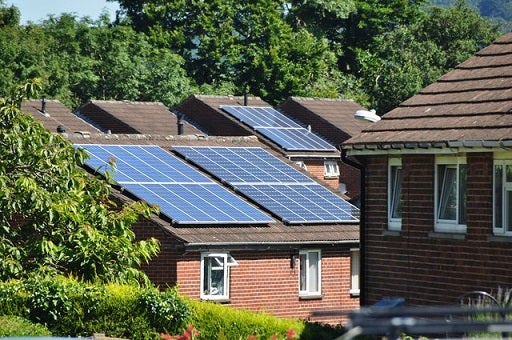What We Can Do to Ensure Solar Panels Work During the Next Sandy

New Jersey is a national leader in solar power. With close to 1,300 MW of solar energy currently installed, the state ranks third in the country in solar capacity.
A commitment to photovoltaic (PV) technology has helped New Jersey reduce carbon emissions, create jobs, and lower electricity bills. Yet despite its impressive track record in New Jersey, distributed solar PV proved vulnerable when it was most needed – during an historic electricity outage in the wake of Superstorm Sandy. With another hurricane season upon us, it’s a good time to look at ways solar can be utilized when the grid fails.
An unfortunate reality
When Superstorm Sandy hit, residential and commercial PV owners were frustrated upon realizing that their solar panels were rendered useless without a functioning central grid, even when the sun was shining brightly.
Generators powered by fossil fuels don’t necessarily hold up any better in the wake of a devastating storm. They certainly can perform as true emergency workhorses if they reach hard-hit areas. But they are noisy, polluting and, unlike solar, dependent on fuel, which in the wake of Sandy quickly became hard to find and expensive.
It is a common belief that simply installing solar panels is enough to keep the lights on during a blackout, but the truth is the majority of PV systems today lose all functionality when the grid goes down. Currently, most on-site PV systems are so-called “grid-tied systems” that interact with the wider utility grid through an inverter. While it’s commonly understood that the grid supplies and absorbs excess energy from the PV system, it is less commonly known that it also serves the critical function of balancing the output of the PV system. More specifically, the PV system and inverter rely on the electric grid to constantly maintain voltage and frequency within appropriate limits as sunlight intensity fluctuates throughout the day.
When the grid operates normally, this is an economic and clean way to help power a home or business. But when the grid fails, grid-tied systems automatically shut down and effectively disconnect from the grid. This design feature of the energy inverter is in compliance with a national safety standard that prevents power from being fed back into the grid when it is down and is aimed at protecting against dangerous voltage surges. Newer, specialized inverters can remain functional without violating this safety standard. The true challenge in sustaining a reliable power supply therefore lies in the need for a power buffer that balances the varying amounts of electricity produced by PV systems when grid power is not available to serve that role.
A bright light in the dark
The good news is that there are several opportunities for solar to provide greater power resiliency. One relative low-cost solution is to upgrade to an inverter that can provide limited emergency power (up to 1,500 watts) to a dedicated power outlet when the sun is shining.
For those looking to power more than a few lights and cell phones during day and night time, battery storage is a common solution. Depending on the size of the battery, this set-up allows the PV system to function as a backup electricity source for crucial circuits, such as lights, fans, basic communication devices, and perhaps a refrigerator. Powering such essential loads can be especially beneficial to critical infrastructure, such as community centers and fire houses. Battery-backed PV combinations, however, come with considerable additional costs. Rebates, such as California’s Self-Generation Incentive Program, can help reduce such costs by providing rebates to small, behind-the-meter storage.
New Jersey is currently developing a straw proposal for its first energy storage incentive program, a promising step toward making solar PV more resilient and affordable. Low-interest loans through the state’s recently announced Energy Resiliency Bank are yet another way to unlock solar PV’s resiliency potential.
Sandy did highlight vulnerabilities in today’s electricity system but it also spurred interest in innovative technologies and new financing mechanisms that advance resiliency. With more frequent and severe weather events on the horizon, it is crucial that this momentum be sustained so that New Jersey’s impressive solar capacity can be utilized when it is most needed.










